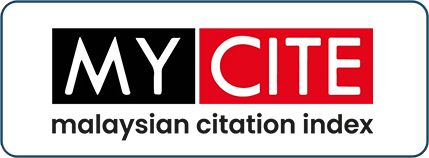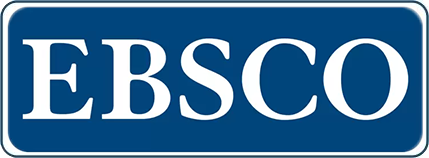Death Khairat Fund Principles and Practice In Kota Damansara Mosque According To Hifz Al-Mal
DOI:
https://doi.org/10.33102/jfatwa.vol28no3.550Keywords:
Keywords: Death Khairat Fund, Death Khairat Money Scheme (DKMS), hifz mal, property care, Maqasid Shariah.Abstract
The Death Khairat Fund, or the Death Khairat Money Scheme (DKMS), is a pure culture practiced among the Muslim community. Usually, this fund will be managed by the mosque institution to make it easier for the local community to make payments and get direct benefits in the event of death. This fund has become necessary for the average Muslim community in funeral management. This is because the benefit of this fund in providing equipment and assistance for complete funeral management has simplified the process of funeral management that needs to be done by the heirs. However, the study of the explanation of the Death Khairat Fund with any principle of Maqasid Shariah has not yet been studied, especially from the point of view of property protection (hifz mal). Therefore, this preliminary study analyses the relationship between the Death Khairat Fund and Maqasid Shariah. The researcher has succeeded in this study by using a qualitative method consisting of analysis of articles, newspapers, books, and interviews with the management of the Death Khairat Fund in the mosque, which was selected face-to-face has been done. As a result, the study found that the practice of Death Khairat Fund is very much in line with the concept of hifz mal from the point of view of Maqasid Shariah because the use of individual property in this fund can have a significant impact on the good of the people and does not lead to any harm and harm. A further study of the relationship between the Death Khairat Fund and other Maqasid Shariah concepts is necessary to see the extent of the importance and need of this fund from the Islamic perspective.
Downloads
References
Abdullah, M. M., Mohamad, M. F., & Yaakob, M. 2020. “The Implementation of Takaful Trust in Malaysia: Analytical Study from The Perspectives of Maqasid Shariah.” Journal of Islamic, Social, Economics and Development (JISED). Vol. 5. (30): pg. 1–12.
Admin. 2023. “12 Skim Bantuan Khairat Kematian Yang Boleh Dituntut Waris”. Info Terkini Bantuan Prihatin Malaysia. https://bantuanrakyat.my/khairat-kematian/.Accessed: 12 May 2023.
Ahmad Iskandar Muslim. Assistant of the Death Khairat. 8 November 2022. Kota Damansara Mosque. SWKK Management Concept in Mosque Institutions. (Personal Interview).
Ali Akbar. 2012. “Konsep kepemilikan dalam Islam”. Jurnal Ushuluddin. Vol. 18. (2): pg. 124-140
Al-Khādimī, Nūruddīn Mukhtār. 2001. Ilm Al-Maqāṣid Al-Sharī’ah. Riyad. Maktabah Al-Abikan. pg. 207.
Al-Raysūnī, A. 1992. Naẓariyyāt Inda Imām al-Shāṭibī. Riyad: Dār al-Alamiyyah.
Amirul Haswendy Ashari. 2019. “Pentingnya khairat kematian”. MyMetro. <https://www.hmetro.com.my/mutakhir/2019/08/484894/pentingnya-khairat>. Accesses: 11 November 2021.
Aryanti, Y. 2016. “Hubungan Tingkatan Maslahah Dalam Maqashid Al-Syari’ah (Maslahah Al-Dharuriyat, Al-Hajiyat, Al-Tahsiniyat) Dengan Al-Ahkam Al-Khamsah”. El-Rusyd: Jurnal Sekolah Tinggi Ilmu Tarbiyah (STIT) Ahlussunnah Bukittinggi. pg. 1–23.
Bernama. 2021. “Populasi Malaysia 32.75 juta pada suku pertama 2021”. Berita Harian.https://www.bharian.com.my/berita/nasional/2021/05/821329/populasi malaysia-3275-juta-pada-suku-pertama-2021. Accessed: 13 July 2023.
‘Alāl Al-Fāsī. 1996. Maqāṣid al-Syarī’ah al-Islāmiyyah wa Makārimuha. Rabat: Matabi’ al-Risalah.
Fakhrur Radzi. 2020. “Kenapa Kita Perlu Bayar Yuran Khairat Kematian Masjid?”. Majalah Labur. <https://www.majalahlabur.com/kewangan/ilmu-perancangan-harta/kenapa-kita-perlu-bayar-yuran-khairat-kematian-masjid/>. Accessed: 15 May 2023.
Gunardi, S., Rahman, A. A. B., Salleh, A. Z., Noor, K. M., Mohd, S., Syed, N., & Shahbuddin, Z. H. S. (2022). The Study on The Death Khairat Fund Scheme (DKFS) As A Halal Service Scheme in The Islamic Financial System At Malaysia: An Analysis From Islamic And Law Views. The Seybold Report Journal (TSRJ). Vol. 17. (09): pg. 1457–1468.
Ibn ‘Ashūr, Muhammad al-Ṭāhir. Al-Syaykh Muhammad al-Ṭāhir. 1998. Ibn ‘Āshūr wa Kitābuhu Maqāṣid al-Syarī‘ah al-Islāmiyyah. al-Basa’ir.
Katan, M., Nasrijal, N. M. H., Noor, A. H. M., & Man, N. C. 2019. “An Awareness Model for an Islamic Pre-Need Funeral Plan”. GATR Journal of Finance and Banking Review. Vol. 4. (2): pg. 47–57.
Muhamat, A. A. 2014. Transforming the Khairat Kematian (Mutual Benevolent Association) to Mini Cooperative. May. 25–28.
Musa, N. M., & Mohd Zaidi, N. M. 2020. “The Role of Maqasid Shariah and Islamic Religiosity in Tourism Perspectives.” Insight Journal. Vol. 7. (1): pg. 65–75.
Naimmullah Jaya. 2020. “Urus jenazah tanggungjawab bersama – Aktivis”. Malaysia Kini. <https://www.malaysiakini.com/news/492098>. Accessed: 28 March 2023.
Nawawi, H. (1983). Metode Penelitian Bidang Sosial. Yogyakarta: Gadjah Mada University Press.
Pathak, S. 1981. Social Welfare: An Evolutionary and Developmental Perspective. New Delhi: Macmillan India.
Prudential BSN. t.th. “Bagaimana Takaful berbeza daripada Insurans?”. Prudential BSN Takaful. https://www.prubsn.com.my/ms/takaful-articles/how-is-takaful-different-from-other-insurance/. Accessed: 13 May 2023.
Razali, M., Mohd, N., Hadigunawan, N., & Saidon, R. 2020. Maqasid Shariah Hifz Mal in E-Wallet Application. Islamiyyat. Vol. 43. (1): pg. 113–120.
Rubayah Yakob, & Nor Hamizah Abd Rahman. 2017. Analisis pemilikan takaful keluarga atau insurans hayat dalam kalangan B40. Journal of Quality Measurement and Analysis. Vol. 13. (2): pg. 29–38.
Shahbuddin, Z. H. S., Gunardi, S., Rahman, A. A., Salleh, A. Z., Omar, S. M. N. S., & Noor, K. M. 2022. Death Khairat Money Scheme (DKMS) Model: Its Practice and Application in The State of Malacca. Seminar Antarabangsa Islam Dan Sains 2022.
Sharifah Norhafiza Syed Ibrahim, Hamidah Bani, Radziah Mahmud, Mohd Yassir Jaaffar, Salina Abdullah, & Mohd Tarmizi Ibrahim. 2021. Good Governance Practiced by The Malaysian Mosque Committees in Managing Mutual Benevolence: Member’s Perception. Journal of Fatwa Management and Research. Vol. 26. (2): pg. 50–62.
Downloads
Published
Issue
Section
License
Copyright (c) 2023 Zawin Hannan Sofea Shahbuddin, Setiyawan Gunardi, Azman Ab Rahman, Ahmad Zaki Salleh, Syed Mohd Najib Syed Omar, Khairunneezam Mohd Noor

This work is licensed under a Creative Commons Attribution 4.0 International License.
The copyright of this article will be vested to author(s) and granted the journal right of first publication with the work simultaneously licensed under the Creative Commons Attribution 4.0 International (CC BY 4.0) license, unless otherwise stated.















